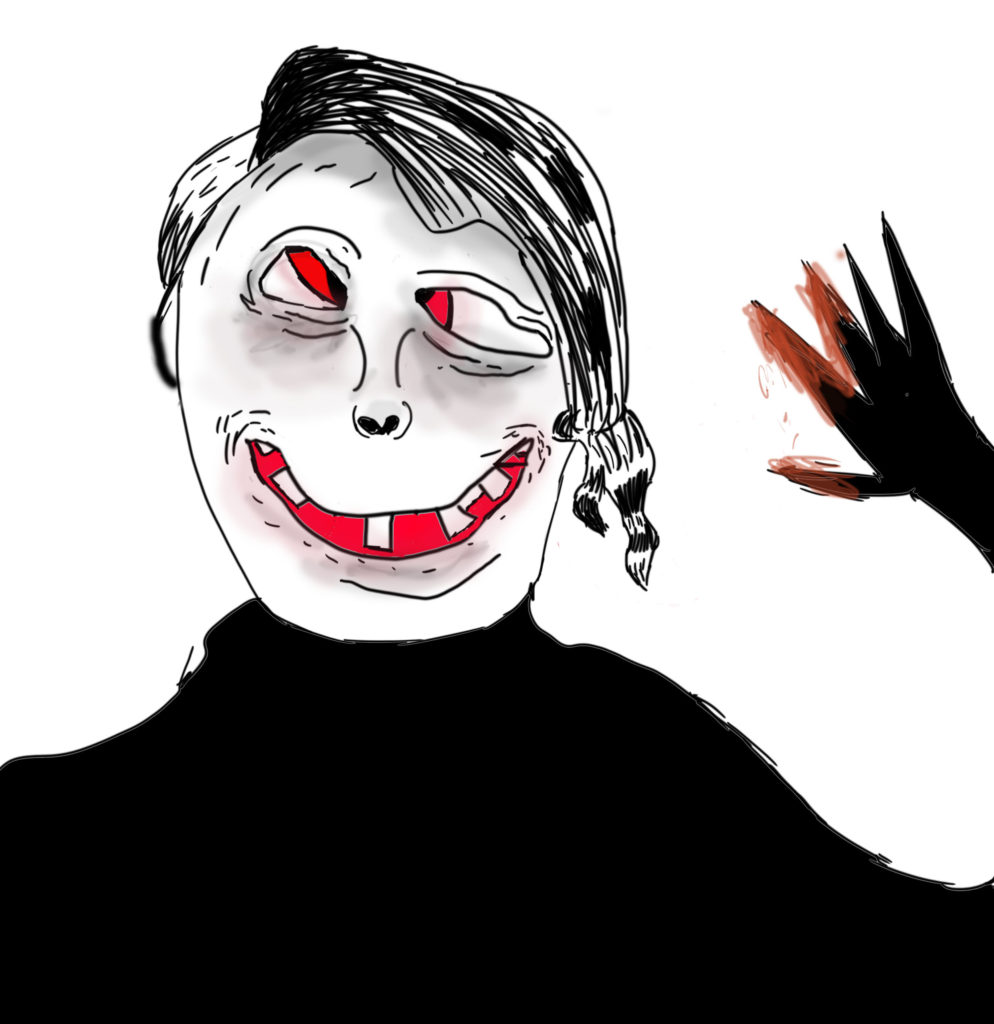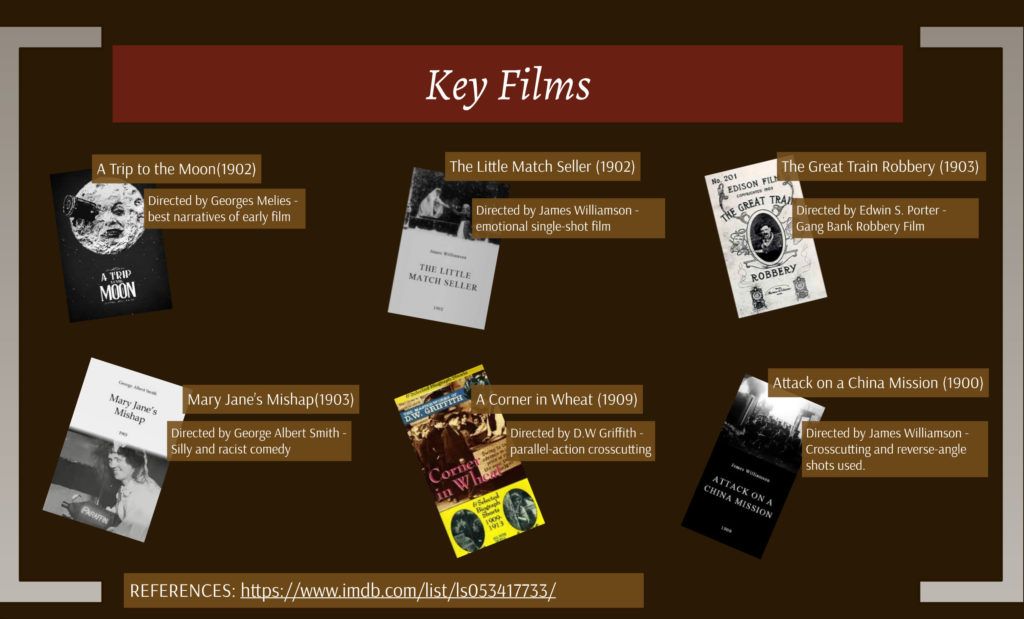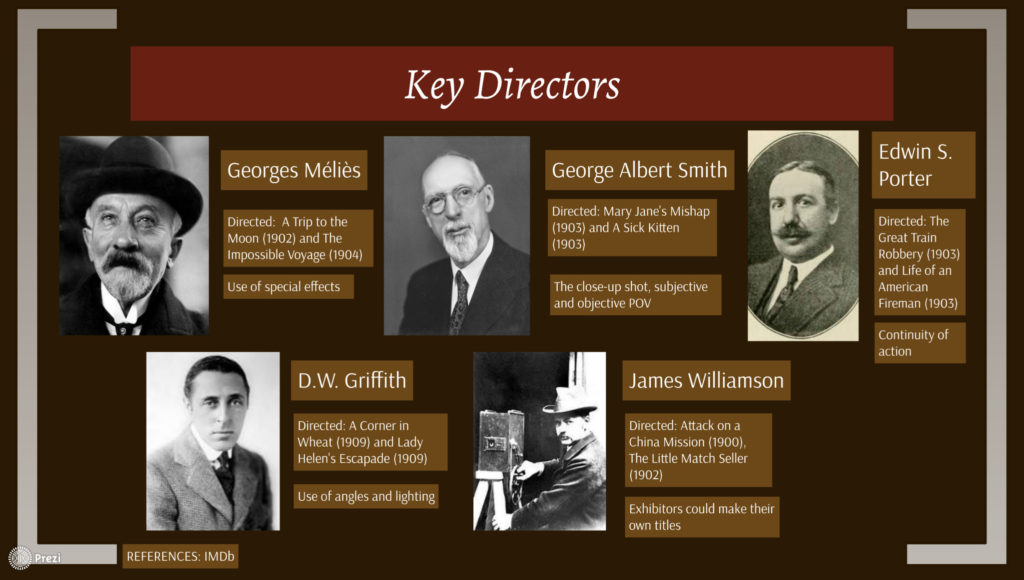
German Expressionist Character


Citizen Kane follows the man of Charles Kane throughout his life from childhood to death as he rises to and falls from power. All aspects make this film a masterpiece and work together to create an amazing step in cinema where the revolutionary ideas of the time, now seem common in all films.
Gregg Toland’s cinematography was revolutionary from its time and still holds up today. Citizen’s Kanes use of deep focus was rarely seen in film before that point and combining with the composition of each scene meant that the viewer could read and analysis the whole frame which enhanced the plot with each layer adding different meaning depth.
For example, in this famous shot, the foreground is taken up by Kane’s mother and Mr. Thatcher who organize the paperwork that determine Charles Kane’s future. In the mid distance, Kane’s father trying to keep his son and giving in to his greed to accept the money. The background contains Kane playing in the snowy background and being a child, which is purposely about to be taken away from him. All these actions and ideas are portrayed in one still shot and is much more effective then different shots. This is all due to the revolutionary use of deep focus as well as mastery of directing and framing of characters that is rare in many films today.

Other aspects of cinematography included Back-lit Subjects and chiaroscuro lighting (lifted from painting to give a grander feel) is used to highlight certain characters as well as their emotional states which influenced film noir. The use of extreme low angle shots (although not new) were added to reveal more of a scene such as ceilings to feel claustrophobic and grounded, as well as to emphasize power dynamics in relationships such as Kane being the largest on screen as he takes power from his friend (mid-ground and smaller) by firing him.

Although the cinematography is probably the most amazing part of Citizen Kane, the editing and special effects add to the masterpiece. This is done by using techniques that are even hard to pick up on today such as the large audience during his political speech being fake and only just a still photograph with holes poked in to create an illusion. Also, during Susan Kane’s first opera performance instead of cutting to see the disgusted people’s reactions, Welles uses fluid editing to not break the flow of the scene.


The narrative and actors must not be forgotten as Welles is able to play from an optimistic young man to an old drained hermit (able by great makeup). The ambivalence of the story separated it from other films as it’s about a very successful man while portraying the tone of failure through the film and many themes like these continue as he tries to stand up for the poor but we see his ideals being compromised. Citizen Kane doesn’t try to direct the audience’s feelings and give the facts of his life while creating complex accounts from those who knew him. This complexity is still rare for many films
My favourite scene is that of when his second wife (Susan) has left him near the end of the film. This is when Kane is reminded of what Rosebud is. Although this is important as it is what the whole plot has been building to throughout the film. For me this scene is great as it shows a man who has been very successful and had an eventful life while still losing everything. It shows a realist man who has a break down after his wife leaves and breaks the room, having to finally deal with the consequences of his actions. The direction is very clever in this scene as Welles does all the movement with the camera only panning left and right while he destroys the room. This is great cinematography as it feels as if the camera has given up on Kane, just like the rest of the characters. This is further reinforced with the sound as the only sound in this scene is that of breaking objects as it gets torn apart without any backing underscore.
The second part of the scene is him leaving the room and walking out of Xanadu. The mise-en-scene of this scene is amazing due to the interior of his mansion. This emphasizes the fact that Kane has all this wealth and so backs up the fact that him being successful, doesn’t make him happy. Gregg Toland’s cinematography is extraordinary in the scene as most notable the infinite mirrors after he leaves the room that shows his infinite reflection. This metaphor could represent Kane’s self-absorbed narcissism and how his wealth has only brought him loneliness. Although there is all this wealth in his mansion of Xanadu, all he is surrounded by is himself and his repeated image of all the mistakes he has made.
I think that the project went well as we achieved the techniques we set out to do as well as having quite a Citizen Kane feel. This was done through turning the project black and white to emphasise the light and give a tone closer to the film. The framing and extreme low angle shots went well as it was clear which technique was which. However although the deep focus worked, we struggled to get it working and also we were not able to change the lights to what we wanted (spotlight on the actor on the stage). Also, I had to raise the volume of the actor (me) in the editing phase as in the second shot, there was great distance between the camera and actor so it was very quiet as first however that was easily fixed in Premiere.
Which technique(s) being used:
Deep Focus
Framed Subjects
Extreme High and Low Angle Shots
Where (location) we are shooting:
The Hall
Who (subject) we are shooting
Bradley, Cat and I
What specific meaning we are trying to achieve in relation to storytelling
The extreme low angle shot shows her loss of control in not getting the job as actor. Also, the framing of them between the director’s shoulders shows that their future and career relies on their choice. The deep focus emphasises this by keeping focus on the actor while also the directors opinions when they turn around.
M:\Students\Year 12\Oliver Huelin\Citizen Kane
Who were Buster Keaton and Charlie Chaplin and are they still considered to be a great cinema practitioners? Name at least one film made by each director.
Both international comedy directors and actors. Used physical comedy and did their own stunts.
Buster Keaton
Films : The General (1926) and Sherlock Jr. (1924)
Known for: his deadpan expression and his imaginative elaborate visual comedy. In The General, he crashed the train into a lake which was very expensive.
What Happened to Him: He got kicked out of the studio and became an alcoholic.
Charlie Chaplin
Films : The Kid (1921) and The Great Dictator (1940)
Known for: Famous for his character ‘The Tramp’ and a famous director/actor. Well liked in the USSR as he represented the poor in a sympathetic way.
Directed by D.W. Griffith, released in 1915
Why was DW Griffiths film Birth of a Nation so successful when it was released in 1915 and why is it so controversial now?
It was so successful as it was a full length feature film (3 hours) that had very high production quality. It was accompanied by a main organ with tunes such as Ride of the Valkyries.
The black people were shown as being drunk and trying to sexual assault others. It contained the KKK who were shown as heroes. Although the KKK was fully gone, as the film was still being watched into the 1920s, more Klan chapters formed and membership reportedly reached into the millions. This released an outburst of racism
References: https://www.history.com/news/kkk-birth-of-a-nation-film
1900’s
I gathered and created the key films and directors slides of the era


Script – Made by Cat . Cat and I made my section
KEY FILMS
Ollie: Some of the earliest movies created during this time are Attack on a China Mission(1900) – James Williamson – it’s a four-shot picture, which was rare enough in 1900, where there are, perhaps, the first instances ever of crosscutting and reverse-angle shots.
Alex: Also A Trip to the Moon(1902) by Georges Melies – this film one of the most famous had one of the best narratives of the early history of film.
Torin: The Little Match Seller (1902) – Directed by James Williamson. A single-shot scene lasting a couple minutes, but it’s the most emotionally affecting piece of early cinema.
Ollie: Mary Jane’s Mishap (1903) – a racist comedy directed by George Albert Smith. The comedy is rather silly and actually racist. features in this film such as extensive editing within scenes, including match cuts between establishing shots and close-ups.
Alex: The Great Train Robbery (1903) – a Gang Bank Robbery Film Directed by Edwin S. Miller. one of the first crime dramas and archetype of the western genre. Director Edwin S. Porter used cross-cutting to show that two events happening at the same time.
Cat: and finally, A Corner in Wheat (1909) – D.W. Griffith – its use of editing to tell exciting or dramatic narratives is why it’s such a key film. Griffith used parallel-action crosscutting for social commentary on the contrasts between the rich and poor.
KEY DIRECTORS IN 1900S
Ollie: These directors are the people that pretty much got the film industry that we love and know today started. They created the things that some of us take for granted today in film such as editing, special effects and many more.
Torin: Some key directors from the 1900s were Georges Méliès, who was a director for A Trip to the Moon (1902) and The Impossible Voyage (1904) and was also well known for his use of special effects.
Cat: Méliès popularised such techniques as substitution splices, multiple exposures, time-lapse photography, dissolves, and hand-painted colour. He was also one of the first filmmakers to use storyboards.
Ollie: Another famous director was George Albert Smith. He directed Mary Jane’s Mishap (1903) and A Sick Kitten (1903). These introduced the close-up shot, subjective and objective point-of-view shots and reversing.
Alex: James Willaimson directed Attack on a China Mission (1900) and The Little Match Seller (1902) and was well-known for a device he invented where exhibitors could make their own titles in 1908.
Cat: D.W. Griffith directed A Corner in Wheat (1909) and Lady Helen’s Escapade (1909). He innovated continually in the use of camera angles and movement, in lighting, and, especially, in editing and tempo.
Torin: Edwin S. Porter who directed The Great Train Robbery (1903) and Life of an American Fireman (1903). Porter’s The Great Train Robbery (1903) is widely acknowledged to be the first narrative film to have achieved such continuity of action
Scott Pilgrim Vs. The World
The group project although was completed, it had many difficulties such as unintentionally ‘crossing the line’ and the acting could have improved. However the quintessential essence and mood of the scene, as it is still best friend tries to council friend with corny dialogue that benefits the comedy of the film.
No Country for Old Men
This was a solo attempt to bring a screenplay to life. It worked better than the Scott Pilgrim piece as the cinematography was in still shots and so impossible to mess up as well as I believe the lighting is quite good. It was effective in portraying the mood of the screenplay of a scared women and an intimidating man who is about to kill her, however at point Carla seems to be more inquisitive than scared which can change the tone of the scene